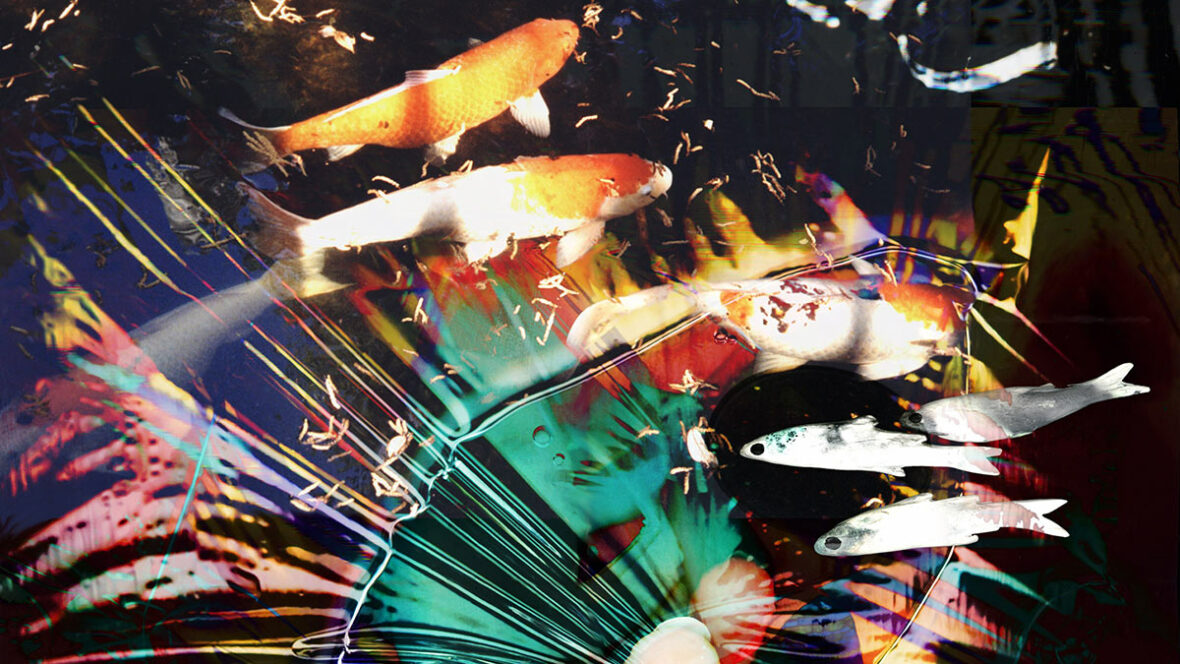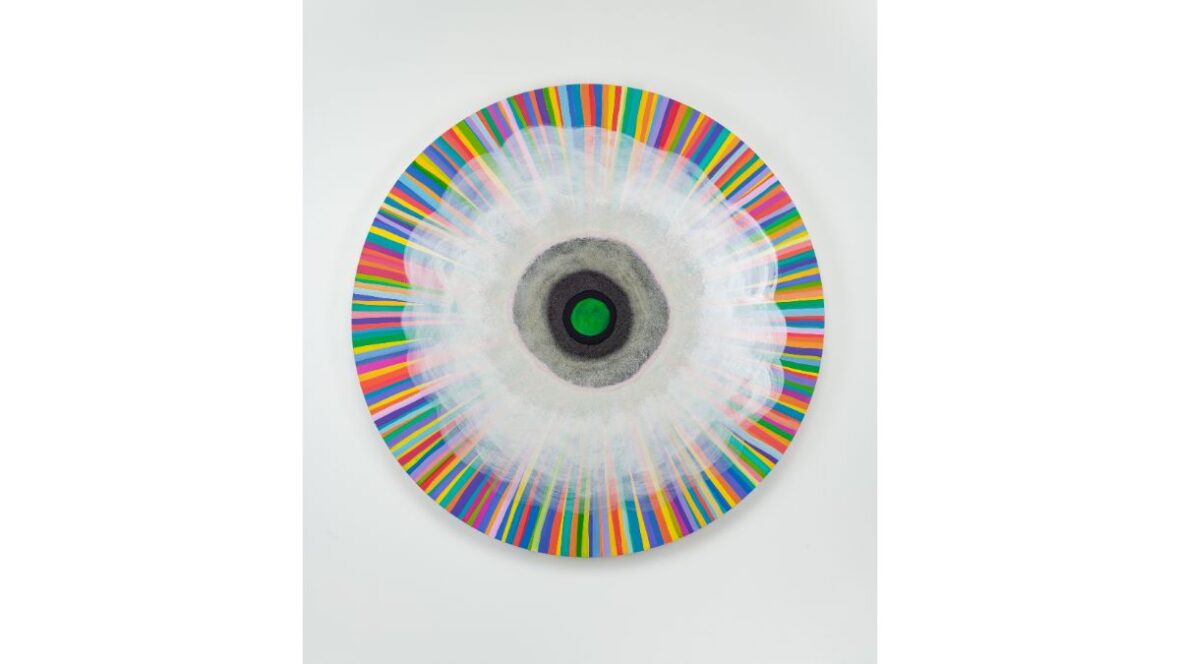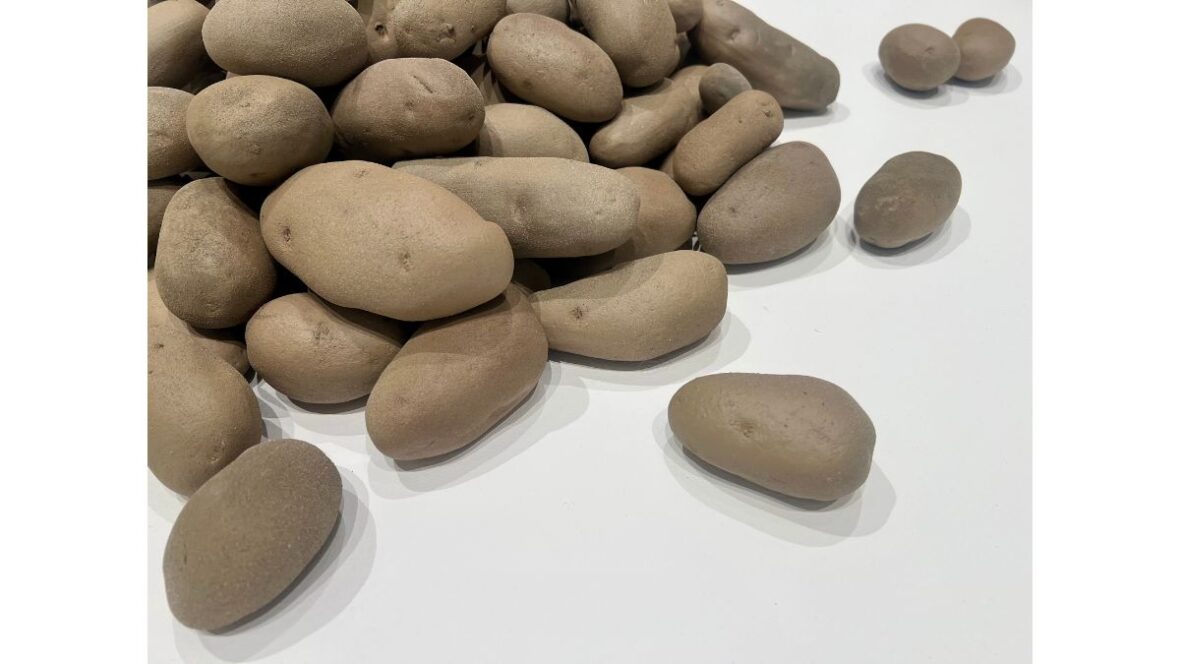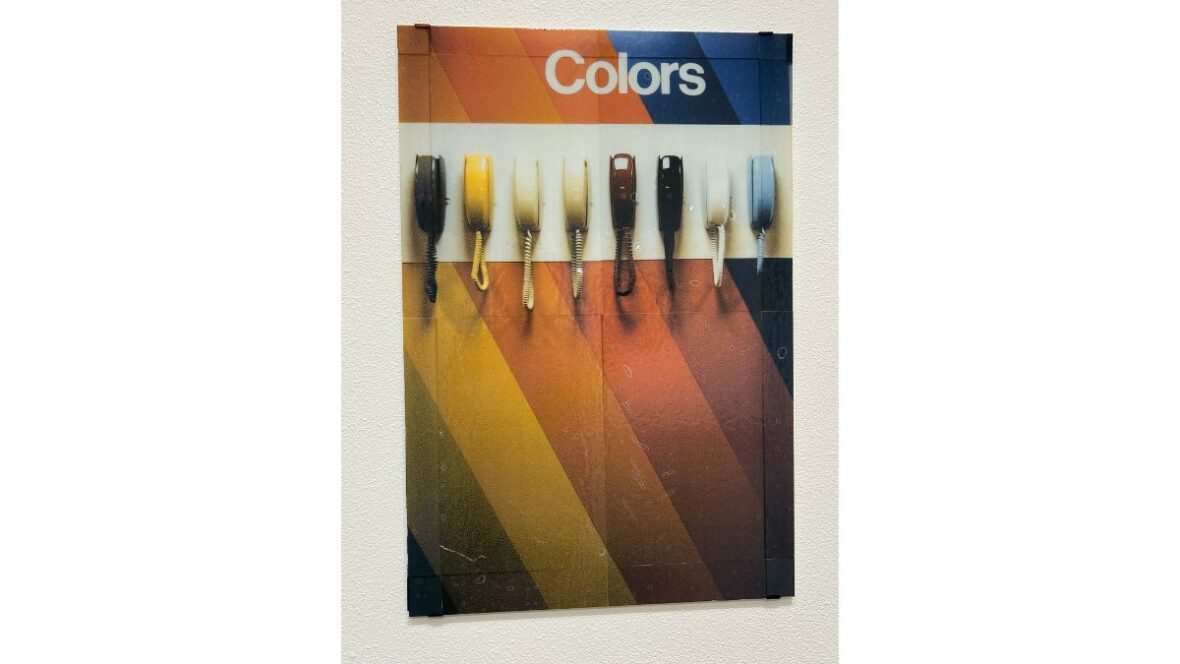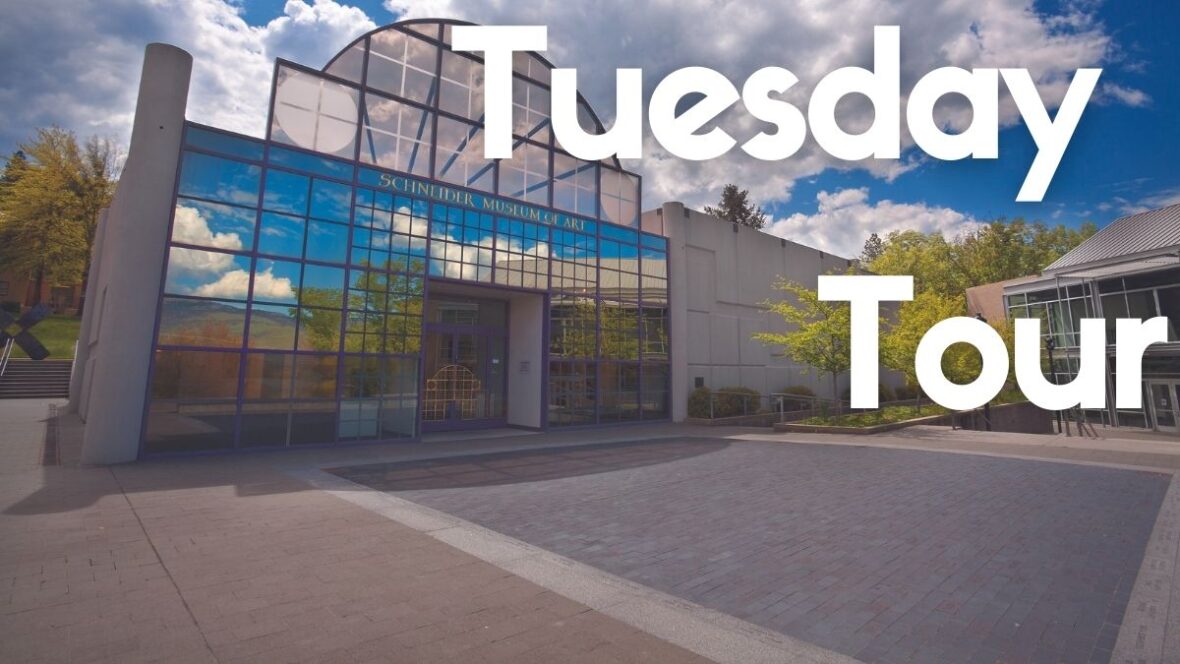Joan Truckenbrod: Digital Fibers – 1975 to Present
Joan Truckenbrod is credited as being one of the earliest pioneers of digital art in the 1960’s. Since the early seventies, Truckenbrod has produced algorithmic art by creating computer software programs based on algebraic formulas that described natural forces such as wind currents or how light reflects off curved and irregular surfaces. These artworks were created through Fortran, a computer program suited for numeric computation and scientific computing and drawn on plotter paper, the only material available to her at that time. Since then, digital color and print technologies have evolved to say the least.
Our exhibition, Joan Truckenbrod: Digital Fibers – 1975 to Present will include some of Truckenbrod’s early coded algorithmic drawings and textiles from the seventies and eighties, her digital paintings from the nineties, fiber art from the early two-thousands and her current work of woven tapestries. The computer as a tool for experimentation and exploration of the natural world has always stayed with Truckenbrod. Each of the forms noted above relating to and inspired by nature and moving through both the artist’s hand and computer programs.
Joan Truckenbrod was a Visiting Artist at numerous universities, colleges and conferences, including the Institute of Contemporary Art in London, International Society of Electronic Arts in Helsinki and Utrecht as well as in the US. Exhibitions include the The Whitney Museum of American Art in New York, New York, ARC Gallery in Chicago, Illinois and the Intermedia Arts Gallery in Minneapolis, MN. Her work has been featured in international exhibitions and include solo exhibitions in Paris, London, Chicago, and Berlin. She has been awarded a Fulbright Fellowship in 1997, a Scandinavian-American Foundation Fellowship and an Illinois Arts Council Grant both in 1994, and a Fellowship at Kala Art Institute in Berkeley, California in 2003. She has been an instructor at Northern Illinois University and a Professor in the Art and Technology Department at the School of the Art Institute of Chicago where she has taught a course titled Electronic Ritual and Ceremony. In 2003 her artwork was featured on the cover of Surface Design Journal, a quarterly print publication focusing on contemporary fiber arts accompanied by an article from Polly Ullrich as well as a Surface Design Award.
Refiguring Transience
Exhibition essay by Christiane Paul, Adjunct Curator of Digital Art, Whitney Museum of American Art
Artists have always been engaged with capturing the sensual experience of the natural world’s phenomena, visible or invisible, giving them form across all media, from painting to sculpture and digital imaging. While digital technologies and natural phenomena seem to be antithetical, they also have been naturally entwined. Generativity—as a process where a rule set, such as a natural system or computer program, is activated and, with some degree of autonomy, produces an outcome or emergent behavior—is intrinsic to both nature and technology. Algorithms essential to programming procedures have been modeled on cell movements, flocking behaviors, and other patterns occurring in nature. Digital technologies have brought about profound changes in the representation of nature, introducing a shift from the depiction of its physical landscape to information visualization and representations of natural data as manifestations of reality. From the weather forecast to satellite photography, nature has become intrinsically bound to mediation and simulation.
Over many decades and in various forms, Joan Truckenbrod’s work has distinguished itself by creating a unique conduit between technology and nature, giving abstract form to natural phenomena or understanding the body and self in its fusion of natural and technological processes. From her early digital drawings and tapestries, to assemblages reflecting on transformations of the body through illness, Truckenbrod has captured phenomena in nature through digital rematerializations. The attempt to give a body to transient processes seems self-contradictory but it is precisely this tension that constructs the threshold at which Truckenbrod’s work exists: a space that is constantly emergent, taking material form yet underscoring a process of coming into being, the potential of forms to reconfigure themselves.
Truckenbrod was one of the pioneers in the field of ‘digital drawings,’ a practice that emerged in the 1960s. Unlike today, artists creating algorithmic art in the 1960s and 70s could not see the results of their code on a screen immediately after having written it. The code they wrote had to be punched onto a series of cards, which then communicated with a mainframe computer that guided plotters to draw the work. The early practitioners of this art form were artists such as Harold Cohen, Chuck Csuri, Herbert Franke, Jean-Pierre Hébert, Manfred Mohr, Vera Molnar, Frieder Nake, and Roman Verostko. In the 1990s Jean-Pierre Hébert coined the term “Algorists” to describe the approach and practice of artists programming visual forms.
It is no coincidence that instruction-based practices of the 1960s, such as the conceptual art of Sol LeWitt, Joseph Kosuth and others, developed at the same time when digital computing became more prominent and artists began to create algorithmic art. Like conceptual art, early computer drawings explicitly emphasized the idea as the driving force behind the form of the work. In the 1970s Joan Truckenbrod started making her Coded Algorithmic Drawings using the programming language Fortran. As she put it, “I saw that algorithms could be reconfigured, they were not a hard set of instructions but fluid, allowing me to transform ideas into new forms. There was a spontaneity that was related to this process, that then related back into the series of works.” Truckenbrod frequently incorporated algorithms that described natural phenomena, such as light or sound waves, and gave them physical substance through her projects. The coded drawings sit at the threshold of static mathematical abstraction and the potential of the endless emergence of patterns.
In the late 1970s Joan Truckenbrod began to explore another form of materiality, which both grounds her work in the history of computing and functions as a connective thread for the pieces she created over the decades. Algorithmic generative processes for creating patterns played a crucial role in one of the most important inventions in the history of computing, the Jacquard loom. Created by Joseph Marie Jacquard in 1804, the loom revolutionized the process of weaving through the use of programs that were stored as punched cards to automate the generative creation of fabrics. Charles Babbage and Herman Hollerith would later use programming with punch cards in their conceptualization of computers. One could argue that generative art made the invention of computers possible, a connection implied by many of Truckenbrod’s pieces: her coded algorithmic textiles from the 1970s, her algorithmic canvas textiles from the 1980s, and her more recent Jacquard weavings.
To make her algorithmic textiles from the 1970s — such as Spherical Reflections and Electronic Patchwork — Truckenbrod implemented algorithms depicting natural phenomena in the programming language BASIC to create a series of abstract sequential images. As a professor in the Art and Technology Department at the School of the Art Institute of Chicago she was able to take advantage of the latest developments in color copying technology. She turned the monitor of her computer, an Apple IIe, upside down on a 3M Color-in-Color copier and printed the coded images on heat-transfer material. After reconfiguring the image components, she hand-ironed them onto polyester fiber to create the composition. The textile work is shown suspended so that its display becomes fluid—affected by light and air movement—and part of the ‘natural’ world. Truckenbrod’s digital fabrics also connect early computational art with the feminist textile art practice of the 1970s that challenged the relegation of techniques such as quilting, sewing, and weaving to the realm of “women’s crafts.”
The exploration of weavings and textiles in Truckenbrod’s work finds its continuation both in her coded canvas textiles from the 1980s and her large layered textiles from the early 2000s. The titles of the digitally printed canvases themselves — Congealing Waves, Energy Surface, and Slack Tides — point to the roots of the visuals in the movements of natural phenomena, combining the fluidity of wave forms with the physicality of the canvas surface. The large layered textiles constitute both an extension of and break with previous concepts and methods. Like their early algorithmic predecessors, they are hung in a way that allows air and light to play with them, but also add another aspect of complexity. The textiles create assemblages of imagery that evolve not only within one layer of fabric but in the subtle interplay between two swaths of polyester voile and polyester charmeuse, respectively. At the same time they represent a break with Truckenbrod’s previous approach in that the imagery is digitally scanned and manipulated rather than coded by the artist.
The imagery on the layered sheets of voile and charmeuse is based on motifs from Truckenbrod’s large archival giclee prints from 1999, a series of abstractions in which she developed a visual vocabulary for sublimating her experience of breast cancer. Never becoming literal, the imagery transforms both the objectification of the body through treatment procedures, and the flow of life into a visual experience at the threshold of transience and permanence, disruption and continuity. Abstract forms appear fractured, like a thin sheet of ice, with cracks radiating out from central points below a calm surface. Water, fish, pebbles and shells symbolize the movement and forms of the natural world. As the artist puts it, “I incorporated water with an undulating trajectory bringing equilibrium through its flow. The fish become the drivers of the future, sewing the pieces together.” Truckenbrod was inspired by British composer George Benjamin’s composition “Upon Silence” in which a soprano sings the words of William Butler Yeats’ poem “Long-Legged Fly.” For Truckenbrod the composition captured the juxtaposition of conflicting layers, with the long-legged fly sitting on the surface of a stream while frenzied chaotic activity unfolds beneath the surface:
Like a long-legged fly upon the stream
Her mind moves upon silence.
The physical process of producing the imagery also reflected the tension of trauma. To create the prints, Truckenbrod put a clear tray of water covered by a plastic wrap onto a digital scanner and pushed her hand into the wrap, scanning an image that captures a visual tension between pressure and force, the imprint of the artist’s hand and malleable liquidity. Truckenbrod’s hand physically and metaphorically shapes, forms, and leaves its mark in the visuals.
The materiality of the layered textiles transforms the motifs of the earlier giclee prints, adding to the visual complexity. Songlines (2000), which overlays an underwater landscape and waves over a woman’s body in a fetal curl, alludes to the First Nations People of Australia’s songlines — “dreaming tracks” that are paths across nature within the animist belief system and are recorded in song cycles, dance, stories, and art. When Truckenbrod’s body was marked with a felt tip in preparation of radiation therapy she connected the experience to indigenous peoples’ ritual of painting symbols on the body that would be revealed in firelight during a ceremony. The undulating fabrics of Songlines tell their story by creating their own symbolic path through nature.
The visual vocabulary of layering, abstraction, and embodiment that has characterized Truckenbrod’s unique expression over the decades seems to crystallize in her self-portrait On Becoming (1984). As an analog and digital image that fuses portraiture with the digital aesthetics of a rasterized visual, On Becoming captures the emergent qualities of the human body, code, and artistic creation, embodying Truckenbrod’s intimate relationship with transience.
Exhibition made possible by the Oregon Arts Commission and The Ford Family Foundation.
Face Coverings Required for Everyone
Because Jackson County is currently in the “high” level, SOU will require face coverings for individuals regardless of vaccination status in indoor areas, effective Aug. 1, 2021, until further notice.
